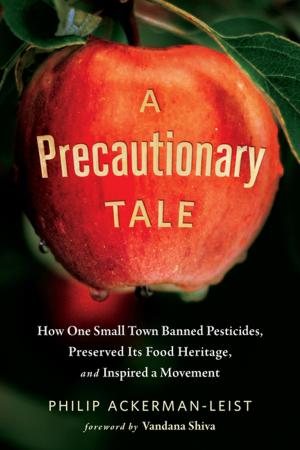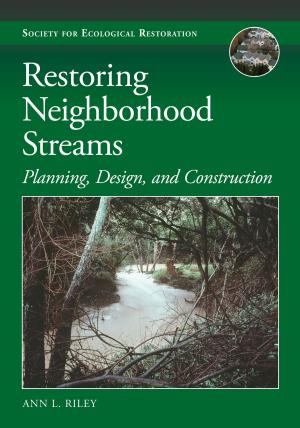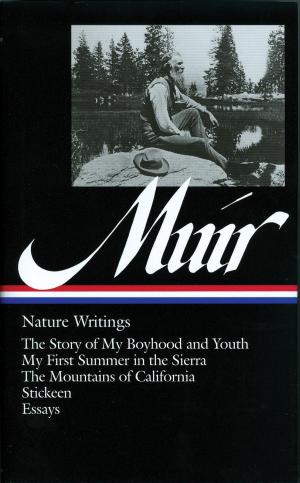Forest Types of Southwest Ohio and Southeast Indiana
A methodology for identifying, projecting, and restoring our 8 local forest types
Nonfiction, Science & Nature, Nature, Plant Life, Plants, Trees, Environment, Environmental Conservation & Protection| Author: | Indigenous Landscapes | ISBN: | 1230002993720 |
| Publisher: | Indigenous Landscapes | Publication: | December 15, 2018 |
| Imprint: | Language: | English |
| Author: | Indigenous Landscapes |
| ISBN: | 1230002993720 |
| Publisher: | Indigenous Landscapes |
| Publication: | December 15, 2018 |
| Imprint: | |
| Language: | English |
This book introduces and describes the local forest type expressions based on their physical environment characteristics; Soil PH, Topography, Hydrology, and Soil Parent Material + the correlated tree species. This information was extrapolated from cross-studying over a thousand acres of soil surveys with disturbed forest regeneration, 2nd growth forests, and older growth forests. Each forest type description includes GPS located guided hikes, Frequent species, Less Frequent species, Dominant Invasive Plants, Typical Slope range, Associated understory/midstories, and common elevation measurements relative to this micro-region.
The Introduction and Lay of the Land will provide the natural history of the land in-depth enough to understand how different glaciers, rivers, and wind created the physical environments that determine our forest types. These section also describes our methodology of study. The book then describes the 8 forest types and their subsets, which includes GPS coordinate labeled recommended hikes to study each forest type. The Soil Surveys and Topography maps within each forest type help to show how the physical environment has determined the tree canopy, and these maps are correlated with the recommended hiking sites. In addition, each forest type is hyperlinked to a matching Facebook Album of Photos that show the forest type.
The end of the book has a link to a Forest Type-Species-Indicator Spreadsheet. This google sheet has 3 tabs that describe each forest species, the tree species organized into their forest types, and indicator species with embedded instructions to help you identify forest types. Be sure to read the Keys for these spreadsheets. Then there's a "How to Apply this Information Section" and a Recommended Method for Reforestation that we've found to be most successful.
Length: 59 pages as a Word Document, 135 pages as E-Book including pictures
[The proceeds from this book fund our Native Plant Agricultural Project, which will be purchasing land locally in 2019 and 2020]
The Guide is broken into two different subsets of counties of SW Ohio and SE Indiana
Subset 1: Forest Types in Correlation to the Land Attributes County Subset 1: Hamilton, Clermont, Brown, Clinton, Warren, Ripley, Dearborn, Ohio, Switzerland
Subset 2: Preble, Butler, Montgomery, Greene, Warren, Clinton, Wayne, Henry, Rush, Fayette, Union, Rush, Decatur, Franklin
Forest Types Identified and Described:
(Each of these forest types and subsets have a corresponding Facebook album of pictures linked in the E-Book)
Forest Type: Neutral to Alkaline (7.0-8.0+PH) Floodplain Forest Subset: Frequently Flooded
Forest Type: Neutral to Alkaline (7.0-8.0+PH) Floodplain Forest Subset: Occasionally to Rarely flooded
Forest Type: Neutral to Alkaline (7.0-8.0+PH) Non-Wetland Forest Rarely or Never Flooded Glacial Outwash and Neutral to Alkaline Wisconsin Glacial Till
Weakly Acidic-Neutral (6.5-7.0PH) Non Wetland Forests Subset: Wisconsin Glacial Till of the 6.5-7.0 PH range
Circumneutral (6.5-7.5PH) Non Wetland Forests Subset: Ordovician Residuum and Colluvium
Acidic (4-6 PH) Wetland Forest Subset: Poorest Drainage
Acidic (5.0-6.5PH) Non-Wetland Forest Subsets: Acidic Glacial Till of All Origins Locally
Projected Forest Types (2) *these two types exist still as physical environments, but are too heavily converted to agriculture to study enough samples, and have been projected based on their physical characteristics as far as adapted species for reforestation:
Very Weakly Acidic-Neutral (6.5-7.0PH) Wetland Forest
Acidic-Very Weakly Acidic (6.0-6.5 PH) Wetland Forest
This book introduces and describes the local forest type expressions based on their physical environment characteristics; Soil PH, Topography, Hydrology, and Soil Parent Material + the correlated tree species. This information was extrapolated from cross-studying over a thousand acres of soil surveys with disturbed forest regeneration, 2nd growth forests, and older growth forests. Each forest type description includes GPS located guided hikes, Frequent species, Less Frequent species, Dominant Invasive Plants, Typical Slope range, Associated understory/midstories, and common elevation measurements relative to this micro-region.
The Introduction and Lay of the Land will provide the natural history of the land in-depth enough to understand how different glaciers, rivers, and wind created the physical environments that determine our forest types. These section also describes our methodology of study. The book then describes the 8 forest types and their subsets, which includes GPS coordinate labeled recommended hikes to study each forest type. The Soil Surveys and Topography maps within each forest type help to show how the physical environment has determined the tree canopy, and these maps are correlated with the recommended hiking sites. In addition, each forest type is hyperlinked to a matching Facebook Album of Photos that show the forest type.
The end of the book has a link to a Forest Type-Species-Indicator Spreadsheet. This google sheet has 3 tabs that describe each forest species, the tree species organized into their forest types, and indicator species with embedded instructions to help you identify forest types. Be sure to read the Keys for these spreadsheets. Then there's a "How to Apply this Information Section" and a Recommended Method for Reforestation that we've found to be most successful.
Length: 59 pages as a Word Document, 135 pages as E-Book including pictures
[The proceeds from this book fund our Native Plant Agricultural Project, which will be purchasing land locally in 2019 and 2020]
The Guide is broken into two different subsets of counties of SW Ohio and SE Indiana
Subset 1: Forest Types in Correlation to the Land Attributes County Subset 1: Hamilton, Clermont, Brown, Clinton, Warren, Ripley, Dearborn, Ohio, Switzerland
Subset 2: Preble, Butler, Montgomery, Greene, Warren, Clinton, Wayne, Henry, Rush, Fayette, Union, Rush, Decatur, Franklin
Forest Types Identified and Described:
(Each of these forest types and subsets have a corresponding Facebook album of pictures linked in the E-Book)
Forest Type: Neutral to Alkaline (7.0-8.0+PH) Floodplain Forest Subset: Frequently Flooded
Forest Type: Neutral to Alkaline (7.0-8.0+PH) Floodplain Forest Subset: Occasionally to Rarely flooded
Forest Type: Neutral to Alkaline (7.0-8.0+PH) Non-Wetland Forest Rarely or Never Flooded Glacial Outwash and Neutral to Alkaline Wisconsin Glacial Till
Weakly Acidic-Neutral (6.5-7.0PH) Non Wetland Forests Subset: Wisconsin Glacial Till of the 6.5-7.0 PH range
Circumneutral (6.5-7.5PH) Non Wetland Forests Subset: Ordovician Residuum and Colluvium
Acidic (4-6 PH) Wetland Forest Subset: Poorest Drainage
Acidic (5.0-6.5PH) Non-Wetland Forest Subsets: Acidic Glacial Till of All Origins Locally
Projected Forest Types (2) *these two types exist still as physical environments, but are too heavily converted to agriculture to study enough samples, and have been projected based on their physical characteristics as far as adapted species for reforestation:
Very Weakly Acidic-Neutral (6.5-7.0PH) Wetland Forest
Acidic-Very Weakly Acidic (6.0-6.5 PH) Wetland Forest















